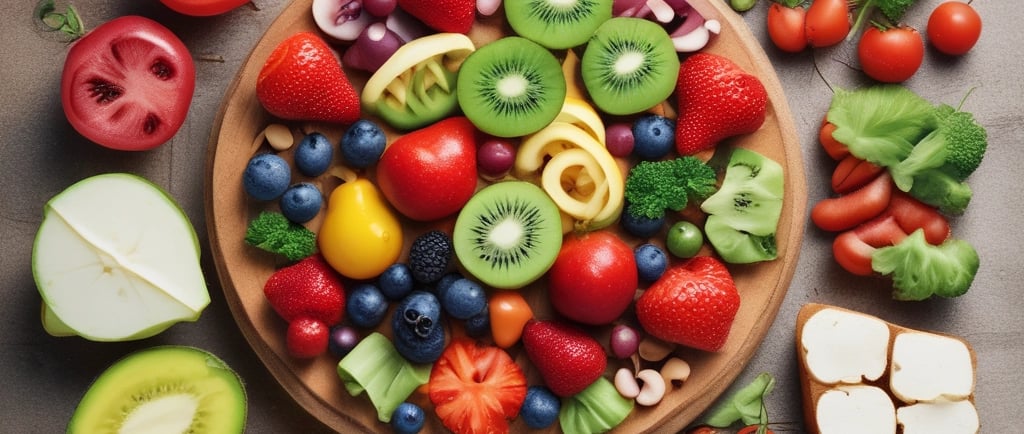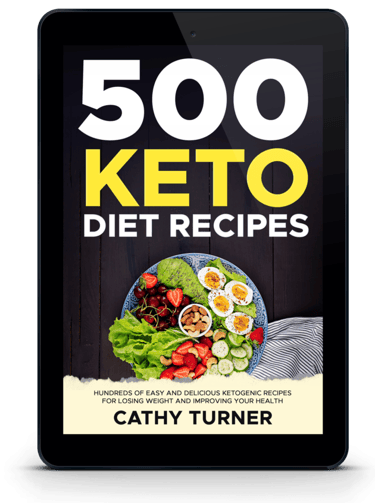Top 10 Low-Calorie Foods That Keep You Full Longer
Discover the top 10 healthy & satisfying foods that help with weight loss and curb hunger naturally.
DIET PLANLOW CARB MEALHEALTHY DIETWEIGHT LOSSLOW CALORIE FOODS
3/4/20256 min read


Low-calorie eating is a dietary approach focused on reducing the amount of calories consumed while still ensuring that individuals feel satisfied. The primary objective is to achieve a balance where one can enjoy meals and snacks without exceeding their daily caloric needs. By incorporating foods that offer high satiety levels without an abundance of calories, individuals can effectively manage their weight and promote overall health.
The benefits of adopting a low-calorie eating strategy extend beyond weight management. This approach encourages the consumption of nutritious foods that are often rich in vitamins, minerals, and other essential nutrients. When individuals choose low-calorie foods, they are more likely to consume a variety of fruits, vegetables, whole grains, and lean proteins. These foods not only provide the necessary nutrients but also contribute to prolonged feelings of fullness, making it easier to resist cravings and prevent overeating.
One key aspect of low-calorie eating is understanding the concept of energy density, which refers to the number of calories a food contains relative to its weight. Foods that are low in energy density, such as non-starchy vegetables and lean meats, provide a substantial volume in terms of servings, allowing individuals to enjoy larger portions without consuming excessive calories. This can play a pivotal role in keeping hunger at bay and promoting satisfaction throughout the day.
As we explore the top 10 low-calorie foods that keep you full longer, readers will discover a range of options that not only support their dietary goals but also enhance their overall lifestyle. These foods will help individuals make informed choices, ultimately leading to healthier eating habits without compromising satisfaction. Navigating the world of low-calorie foods can be an empowering journey towards achieving one’s health and wellness objectives.
The Science Behind Satiety
Understanding satiety is a nuanced aspect of nutrition science, crucial for managing appetite and making informed food choices. Satiety refers to the feeling of fullness and satisfaction that reduces the desire to eat. Various components of food play significant roles in influencing this sensation. Notably, proteins and fiber have been extensively studied for their ability to promote prolonged satiety. Foods high in protein encourage a greater release of satiety hormones, such as glucagon-like peptide-1 (GLP-1) and peptide YY (PYY), which signal the brain to curtail hunger. This hormonal response not only diminishes the appetite but also aids in stabilizing blood sugar levels, preventing the rollercoaster of cravings that can accompany high-sugar foods.
Fiber-rich foods are equally effective in enhancing fullness. Soluble and insoluble fibers have distinct properties; they add bulk to meals and are slower to digest, thereby prolonging the feeling of satiety. For instance, consuming whole grains, legumes, and vegetables rich in fiber can create a lasting sense of fullness as these foods expand in the digestive system. This slow digestion rate is pivotal in avoiding unnecessary snacking and overeating later in the day.
Another essential factor contributing to satiety is the water content in foods. High-water-content foods, such as fruits and vegetables, not only add volume without significantly increasing caloric intake but also require more time to chew and digest. This mechanical aspect of eating can enhance feelings of fullness, prompting individuals to consume fewer calories overall.
In conclusion, the interplay between protein, fiber, and water content in foods fundamentally influences satiety. By selecting low-calorie foods that harness these attributes, individuals can effectively manage their hunger and make healthier eating choices, supporting their overall dietary goals.
Top Low-Calorie Foods That Keep You Full
When it comes to maintaining a healthy diet while managing caloric intake, certain foods stand out for their ability to promote satiety without contributing excessive calories. Here, we present a list of the top ten low-calorie foods known for their filling properties, along with a glimpse into their nutritional benefits and how they can be integrated into your meals or snacks.
1. Oats: Oats are rich in soluble fiber, particularly beta-glucan, which has been shown to increase feelings of fullness. A standard serving size of half a cup of rolled oats contains approximately 150 calories. You can enjoy oats as oatmeal for breakfast or blended into smoothies for added texture.
2. Greek Yogurt: This protein-packed option is thicker and creamier than regular yogurt, making it excellent for satiety. A serving of non-fat Greek yogurt (about one cup) provides around 100 calories. It can be added to breakfast bowls, smoothies, or used as a base for salad dressings.
3. Eggs: Eggs are incredibly versatile and contain high-quality protein that aids in hunger management. A large egg contains roughly 70 calories and can be boiled, poached, or scrambled for various meals throughout the day.
4. Beans: High in fiber and protein, beans are a staple in many diets. A half-cup serving of cooked black beans has about 110 calories. They can be included in salads, soups, or enjoyed with rice for a fulfilling meal.
5. Apples: Apples are hydrating and rich in fiber, providing a sense of fullness with just about 95 calories per medium-sized fruit. They make a perfect snack, whether eaten raw or sliced with nut butter.
6. Leafy Greens: Vegetables such as spinach, kale, and collard greens are extremely low in calories but high in volume and nutrients. A cup of raw spinach has only 7 calories, allowing for generous servings in salads or smoothies.
7. Popcorn: Air-popped popcorn is a whole grain that can be satisfying when properly portioned. Three cups of air-popped popcorn contain approximately 90 calories. It can serve as a healthy snack, seasoned with herbs or spices.
8. Cucumbers: With a high water content, cucumbers provide crunch and hydration with very few calories (16 calories per medium cucumber). They can be sliced for salads or enjoyed with dips for snacking.
9. Quinoa: This ancient grain is a good source of protein and fiber. A half-cup serving of cooked quinoa has about 110 calories, making it an excellent base for salads or as a side dish.
10. Chia Seeds: When soaked in liquid, chia seeds expand and create a gel-like texture, making them filling despite a small serving size (2 tablespoons equals approximately 140 calories). They are fantastic in smoothies, puddings, or toppings for yogurt.
Incorporating these low-calorie foods into your diet can help maintain fullness while managing overall calorie consumption effectively. Each option provides a unique blend of nutrients that support a balanced and healthy lifestyle.
Tips for Incorporating Low-Calorie Foods into Your Diet
Incorporating low-calorie foods into your daily diet can be both satisfying and beneficial for long-term health. Here are some practical strategies that can assist in achieving a balanced approach to nutrition while enjoying the benefits of these foods.
First, consider meal prepping as an effective way to ensure you have low-calorie options readily available. Spend some time each week preparing meals in advance. For example, you can batch cook vegetables such as zucchini, cauliflower, or spinach. These can be easily added to various dishes to enhance both nutrition and volume without significantly increasing caloric intake. Prepare simple low-calorie salads or soups that can be stored and consumed throughout the week, ensuring they remain fresh and flavorful.
Next, focus on smart snacking. Incorporate fruits, vegetables, and low-calorie dips, like salsa or hummus, into your snack routine. Carrot sticks or cucumber slices paired with a light dip can provide a satisfying crunch while keeping calories low. Additionally, consider popcorn without butter or air-popped as a great low-calorie option for a quick snack to stave off hunger between meals.
Combining these foods with other nutritious ingredients is crucial for flavor and satisfaction. For instance, adding herbs and spices can elevate dishes without adding calories. Using low-calorie marinades can also enhance the taste of grilled or roasted vegetables and proteins.
Meal timing is another significant aspect to consider. Eating smaller, more frequent meals throughout the day can help maintain energy levels while allowing low-calorie foods to be a staple. Practicing portion control can also help optimize the benefits of low-caloric eating, as it encourages mindful eating habits. Using smaller plates and serving appropriate portions can prevent overeating while still enjoying a variety of foods.
Lose Weight the Smart Way: Proven Programs for Fast Fat Loss!
1. Vegan & Plant-Based Diet Programs:
The Plant-Based Recipe Cookbook – A collection of delicious vegan recipes to help people transition to plant-based eating.
Vegan Bodybuilding & Fitness Guide – A program designed for those looking to build muscle on a vegan diet.
2. Weight Loss & Fat Burning Programs:
Smoothie Diet 21-Day Program – A high-converting diet plan based on nutrient-rich smoothies for rapid weight loss.
Custom Keto Diet – While it's keto-focused, many people transition from keto to plant-based low-carb diets, making it a good cross-sell.
3. Digital Meal Planners & Trackers:
Fat Burning Kitchen – A program that teaches users how to eat clean and burn fat naturally.
Metabolic Cooking – A fat-loss cookbook with easy, metabolism-boosting recipes.


